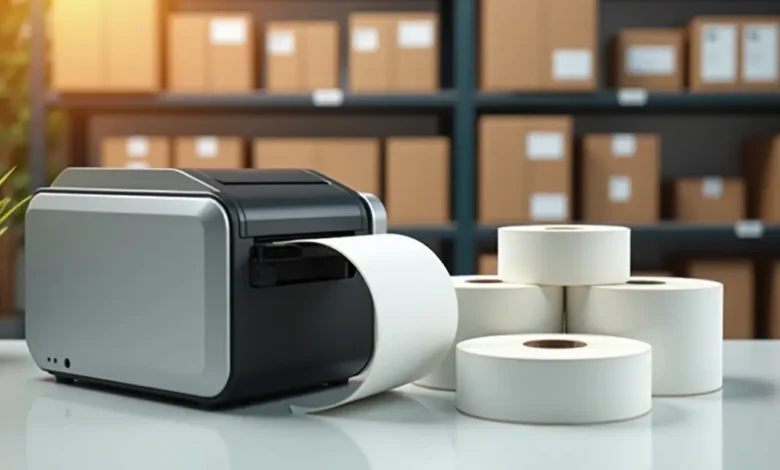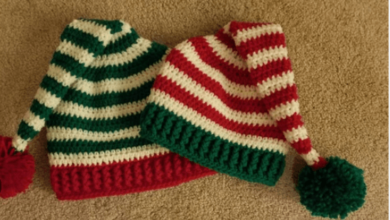What Are the Types of Direct Thermal Label Paper? A Deep Dive Into Standard, Synthetic, and Waterproof Materials

Direct thermal labels are widely used in shipping, retail, food service, healthcare, and manufacturing—but not all labels are created equal. The performance of your label depends heavily on the type of material used. For businesses that rely on fast, smudge-free, and legible prints, understanding label paper types is essential to avoid wasted inventory, printing errors, or customer complaints.
In this guide, we’ll break down the major categories of direct thermal label paper—standard paper, synthetic materials, and waterproof options—and help you choose the best type for your specific application.
Why the Label Paper Type Matters
Choosing the right label material affects:
- Print quality and legibility
- Resistance to water, oil, and abrasion
- Adhesion strength on different surfaces
- Durability in harsh conditions (heat, cold, humidity)
- Shelf life and storage behavior
Whether you’re labeling products, packages, or perishables, selecting the correct material is crucial to maintaining both efficiency and brand trust.
Type 1: Standard (Uncoated) Direct Thermal Paper
This is the most commonly used label material for general-purpose labeling.
Features:
- Economical and widely available
- Smooth facestock with thermal coating
- Suitable for short-term applications
Advantages:
- Low cost
- Ideal for same-day or short-term shipping, logistics, retail pricing
- Good compatibility with most direct thermal printers
Limitations:
- Susceptible to water, oil, light, and abrasion
- Not suitable for long-term storage or exposure to outdoor conditions
- Can darken or fade over time, especially with heat exposure
Use Cases:
- eCommerce shipping labels
- Temporary warehouse labeling
- Grocery store pricing
Type 2: Top-Coated Direct Thermal Paper (Synthetic Option)
Top-coated direct thermal labels include a protective layer on the printable surface, offering added durability.
Features:
- Protective top coat resists moisture, UV, and smudging
- Higher quality print contrast and durability
- May be paper-based or synthetic hybrid
Advantages:
- Increased resistance to moisture, light, and abrasion
- Extended label life and scannability
- Suitable for semi-harsh environments
Limitations:
- Slightly more expensive than standard paper
- Not fully waterproof, but better than uncoated paper
Use Cases:
- Fresh food labeling
- Logistics in humid or refrigerated conditions
- Outdoor applications lasting a few days
Type 3: Waterproof Synthetic Direct Thermal Labels
These labels use fully synthetic facestocks, such as polypropylene or polyethylene, and are built for durability in extreme conditions.
Features:
- Water-, oil-, and tear-resistant
- May include freezer-grade or high-tack adhesives
- Designed for long-term or high-impact use
Advantages:
- Withstands harsh environments (freezers, rain, grease, outdoor exposure)
- Excellent barcode clarity and scanning performance
- Tearproof and durable during heavy handling
Limitations:
- Higher cost
- May require printer calibration for synthetic thickness
Use Cases:
- Frozen food packaging
- Industrial part tagging
- Construction, outdoor labeling
- Medical samples and lab vials
Material Comparison at a Glance
Property Standard Paper Top-Coated Paper Synthetic Waterproof Cost Low Moderate High Durability Basic Medium Excellent Water Resistance Poor Fair Excellent Oil Resistance Poor Fair Excellent Tear Resistance Poor Fair Excellent Use Duration Short-term Medium-term Long-term
How to Choose the Right Type for Your Needs
Ask yourself these key questions:
- How long should the label last?
- <3 days → Standard
- 3–14 days → Top-coated
- 14+ days or rough conditions → Synthetic
- Where will the label be stored or used?
- Dry warehouse → Standard
- Refrigerated → Top-coated or synthetic
- Outdoors or greasy → Synthetic only
- What surface will it stick to?
- Cardboard boxes → Any type
- Plastic, metal, or curved items → Synthetic recommended
- Is cost or durability more important?
- Cost-sensitive? Standard or top-coated
- Mission-critical? Choose synthetic
Betckey’s Approach to Direct Thermal Paper Options
Betckey offers a range of direct thermal labels tailored for specific business needs. While their compatible labels are thinner than some OEM counterparts, they maintain high performance thanks to quality coating, precise die-cutting, and carefully selected adhesives.
From basic paper labels to synthetic waterproof options, Betckey helps you find the right balance between performance and cost—so you can label with confidence in any environment.
FAQs About Types of Direct Thermal Label Paper
1. Can I use standard direct thermal paper for refrigerated items?
Not recommended. Moisture may cause uncoated paper to smear or detach. Use top-coated or synthetic labels instead.
2. Are synthetic labels recyclable?
Some are, depending on the material. Always check with your supplier.
3. Will synthetic labels work in any direct thermal printer?
Most modern printers support synthetic labels, but calibration may be required. Check printer specifications for thickness compatibility.taba squishy
Conclusion: Choose the Right Material, Get the Right Results
From warehouse shelves to frozen food packaging, choosing the right direct thermal label paper ensures your operations run smoothly and professionally. Each type—standard, top-coated, and synthetic—has a role to play.
For businesses that demand dependable performance at the right price, choosing a trusted supplier like Betckey means you don’t have to compromise. With expertly engineered materials and a range of options to meet your labeling challenges, Betckey delivers labels that work as hard as you do.





